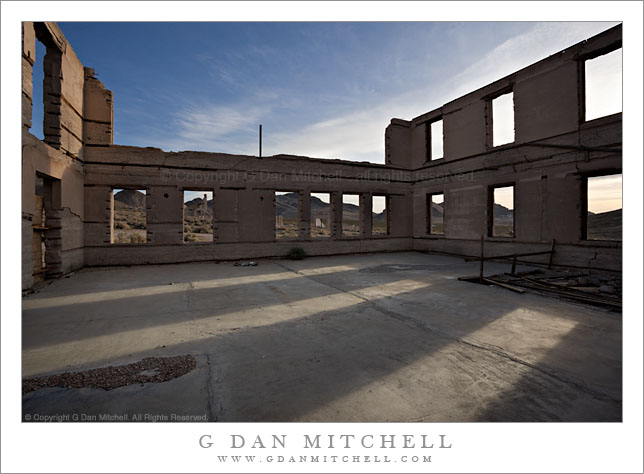
Last Light, Tuolumne River. Yosemite National Park, California. July 10, 2009. © Copyright G Dan Mitchell – all rights reserved.
The last light touches the top of Lembert Dome and the peaks of the Sierra Crest beyond and the light from lenticular clouds is reflected off the surface of the Tuolumne River, Yosemite National Park, California.
If you don’t like sunsets… you may want to check back in a few days – this is the second of what will be a sequence of at least four photographs taken on one amazing evening in Tuolumne Meadows in the Yosemite high country of the Sierra Nevada. I posted one from the series yesterday, so I won’t repeat the entire story, but here is a bit of background information.
There is a particular set of Sierra Nevada weather conditions that I’ve experienced only a few times in its perfect state – but when it happens the sky does absolutely astonishing and magical things. There is at least one photograph in this series that may make you think that I invented the colors in post, but I assure you I did not.
Sometimes in the afternoon a stable wind pattern sets up over the peaks on the Sierra crest. The clouds, in this case the curving lenticular clouds seem to just park over the ridge. If this continues, late in the day the number, height, and size of these clouds can increase dramatically. But, as spectacular as this may be, it isn’t quite enough for the conditions I experience this past week. For this to happen, some broken high clouds should extend to the west of the range – clouds to create color when lit by the last light of the setting sun, but broken so that the light can project east onto the lenticular clouds over the crest.
On this evening I saw all of the pieces falling into place and thought that maybe, just maybe, it might happen. With this in mind I was in Tuolumne Meadow nearly two full hours before the actual sunset. I spent the first twenty or thirty minutes scouting out my location – I needed to know exactly where I would shoot from since I didn’t want to be caught looking for a composition when/if this light arrived. With a composition scoped out I spent perhaps 30-45 minutes wandering around nearby shooting various subjects as the evening wore on. An hour before sunset I was back at “the spot” – covered in mosquito repellant! – and watching and waiting.
I won’t tell the whole story here – but this photo was made at just about the time it became apparent that the “magic light” was not simply possible but actually quite likely.
This photograph is not in the public domain. It may not be used on websites, blogs, or in any other media without explicit advance permission from G Dan Mitchell.
keywords: yosemite, national, park, california, usa, sierra nevada, summer, tuolumne, tioga, river, lember, dome, reflection, gravel, bar, ripple, flow, bank, grass, meadow, forest, tree, rock, boulder, plant, snag, ridge, sierra nevada, crest, peaks, mountain, range, mount, dana, gibbs, kuna, crest, mammoth, peak, sky, pattern, formation, lenticular, weather, meteology, landscape, scenic, travel, stock



